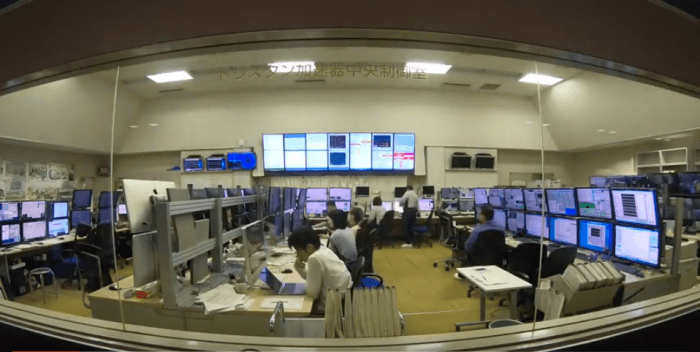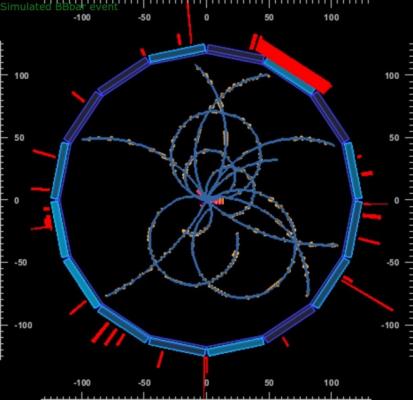
At the beginning of last month at the international center of high energy physics, KEK, in Tsukuba, Japan, has earned magnet SuperKEKB. And it was recently conducted the first experiment on the interaction of positrons with electrons, in which were registered the appearance of new particles containing quarks.
Recording occurred through the detector, Belle-II, which is an improved version of the sensor used in the course of the project, KEKB/Belle, which was conducted from 1999 to 2010. The information was analysed the characteristics of pairs of B and anti b mesons, and also measured the effect of violation of CP-symmetry.

The control center SuperKEKB
Updated electron-positron SuperKEKB magnet is a super-B setting, where we study the decay of elementary particles containing heavy quarks. And the detector Belle II is a high – precision electromagnetic calorimeter for energy measurement of particles. Weight Belle II is about 40 tons. The device itself is built on the basis of crystals of cesium iodide. And information is recorded so rapidly that allows for millionths of a second to identify whether the current clash useful and worth it to register, or to spend resources on it does not make sense.

Display of registration of elementary particles
In a recent experiment, installed at the point of interaction between beams of electrons and positrons Belle II registered the first electron-positron annihilation. Physicists expect that in the next decade it will be possible to register the order of 50 billion collisions of elementary particles, allowing better study pairs of B and anti-B mesons. It is 50 times more volume of data obtained during the previous experiment.
In the most powerful Collider SuperKEKB held the first collision of particles
Vladimir Kuznetsov